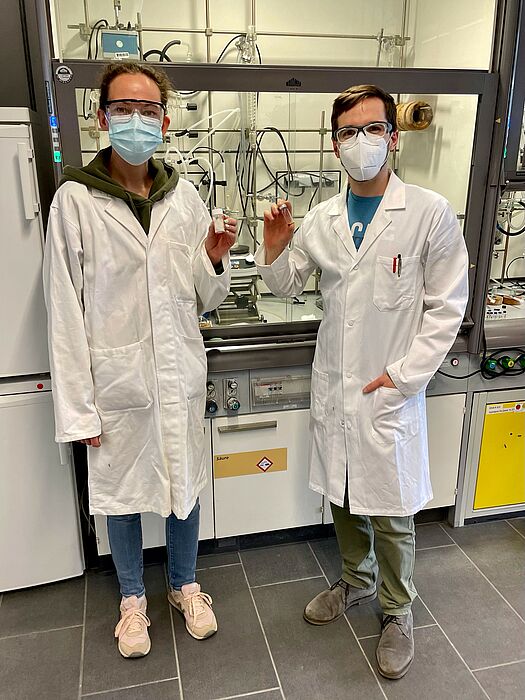Chemists identify criterion explaining well-known effect
Nuclear magnetic resonance is a powerful analysis technology with a broad range of applications – from the atomic structure of molecules and materials to clinical applications in magnetic resonance imaging. Its low sensitivity, however, has long posed a challenge: It requires a higher concentration of samples and longer measuring times compared to other methods. Which is why scientists from Paderborn University have investigated mixed-valence, polarizing materials and their potential in relation to nuclear magnetic resonance with the aim of achieving increased sensitivity. They have accomplished this by unlocking the principles of the Overhauser effect, well known among experts for its effect on liquids and metals, for non-metal solids. The results have now been published in the renowned professional journal, “Angewandte Chemie” (Applied Chemistry). According to the publisher, the scientists’ work belongs to the top 10 percent of all publications that are deemed by expert reviewers to be highly relevant.
The Overhauser effect is seen primarily in the area of magnetic resonance. Dr. Hossam Elgabarty, junior research group leader involved in the study, explains. “It’s a technique for improving signals in various applications of nuclear magnetic resonance, based on transferring the strong polarization of unpaired electrons to neighbouring nuclei using microwave radiation. However, up until now it had only been proven for one single substance.” Professor Thomas Kühne, under whose professorship the study was carried out, adds, “Calculating the electronic structure of this substance has revealed that it is a mixed-valance compound. We wanted to demonstrate that these compounds are suitable polarizing agents for dynamic nuclear polarization. Our results have proven this. That this fact is also a prerequisite for the Overhauser effect was previously unknown.”
Lead author of the study, Dr. Svetlana Pylaeva of Paderborn University’s Chemistry Department sums it up. “We have identified the phenomenon for the first time in high-field nuclear magnetic resonance experiments on non-metal solids with mixed-valence compounds.” These compounds constitute a group of molecules in which, due to certain bonding properties, molecular mobility persists even in solids, which is not usually the case. They supported a marked increase in sensitivity, and therefore more precise results for nuclear magnetic resonance. Since the Overhauser effect is an efficient mechanism for high magnetic fields, further investigation of this phenomenon is exceedingly interesting, according to Kühne.
You can access the study, which was conducted in interdisciplinary cooperation between Kühne’s team and Professor Jan Paradies, also from Paderborn University, at: https://onlinelibrary.wiley.com/doi/10.1002/ange.202103215.
Nina Reckendorf, Press, Communication and Marketing Unit




